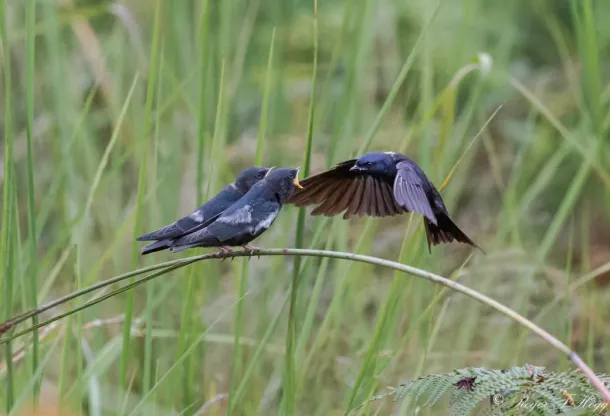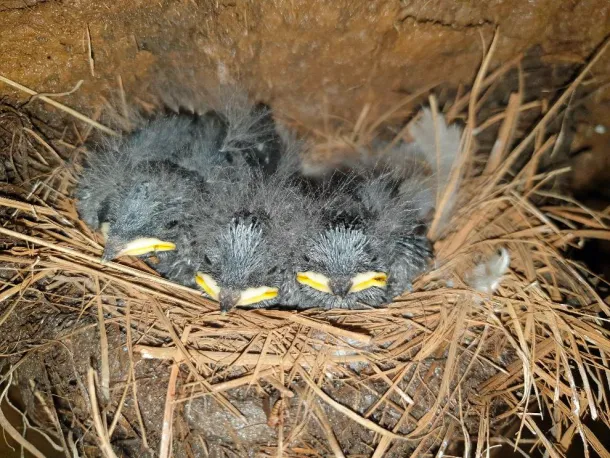iNkonjane Nature Reserve established

The Blue Swallow
Image: Supplied
The iNkonjane Nature Reserve, spanning 181.7 hectares, was formally proclaimed by MEC Reverend Musa Zondi, marking a crucial step in safeguarding critical habitats for rare wildlife —including the iconic and Critically Endangered Blue Swallow.
Named after the isiZulu word inkonjanesibhakabhaka, meaning "Blue Swallow," the reserve, in Pennington, is a symbol of hope, resilience, and commitment to biodiversity preservation. The announcement was made by KwaZulu-Natal MEC for Economic Development, Tourism and Environmental Affairs, Reverend Musa Zondi, who formally proclaimed the 181.7-hectare reserve.
The iNkonjane Nature Reserve lies adjacent to the iMpendle Nature Reserve, which is already home to four of the country’s remaining 30 breeding pairs of the Critically Endangered Blue Swallow (Hirundo atrocaerulea). The new reserve secures an essential foraging habitat for these graceful insectivores, increasing their chances of survival in the wild.
But the Blue Swallow is not the only species to benefit. The reserve also provides critical habitat for the Critically Endangered Pennington’s Protea Butterfly (Capys penningtoni), a species found only in the greater Mkhomazi River valley. It is the third reserve in KwaZulu-Natal created specifically to protect threatened butterfly species. The butterfly’s life cycle is intricately tied to the common sugarbush protea (Protea caffra), the only plant where it lays its eggs. The caterpillars mature within the buds, emerging nearly a year later as adult butterflies.
In addition to these rare species, the iNkonjane Nature Reserve conserves valuable tracts of Southern KwaZulu-Natal Moist Grassland and Eastern Mistbelt Forest, both of which face increasing pressure from farming, plantations, and urban development. These habitats may one day support reintroductions of species such as the Endangered oribi antelope (Ourebia ourebi), the Endangered Mountain Reedbuck (Redunca fulvorufula), and the Near Threatened grey rhebok (Pelea capreolus).
The establishment of the reserve is the result of a biodiversity offset agreement between Ezemvelo KZN Wildlife and water utility companies uMngeni and uThukela Water. This initiative compensates for the environmental impact caused by constructing a wastewater pipeline through a section of Midmar Nature Reserve. In a rare move, the KwaZulu-Natal Nature Conservation Board temporarily lifted its policy prohibiting development servitudes through protected areas—on the condition that high-conservation-value land be secured to offset the damage.
The new iNkonjane Nature Reserve will be managed by Ezemvelo KZN Wildlife in conjunction with the neighbouring iMpendle Nature Reserve. Importantly, there will be no fence separating the two reserves, ensuring wildlife can move freely and the area can be managed as a larger, ecologically connected unit.
With the addition of iNkonjane, Ezemvelo now manages 518 628 hectares of protected land, representing 5.5% of the province. This brings the total extent of protected areas in KwaZulu-Natal to over one million hectares (10.78%). While South Africa remains below the international biodiversity goal of 30% land protection, each new declaration represents a step forward in meeting those targets.
Although iNkonjane Nature Reserve is not yet open to visitors, the public is welcome to explore the neighbouring iMpendle Nature Reserve, a vital companion in the growing conservation landscape of KwaZulu-Natal.

Blue Swallow
Image: Supplied